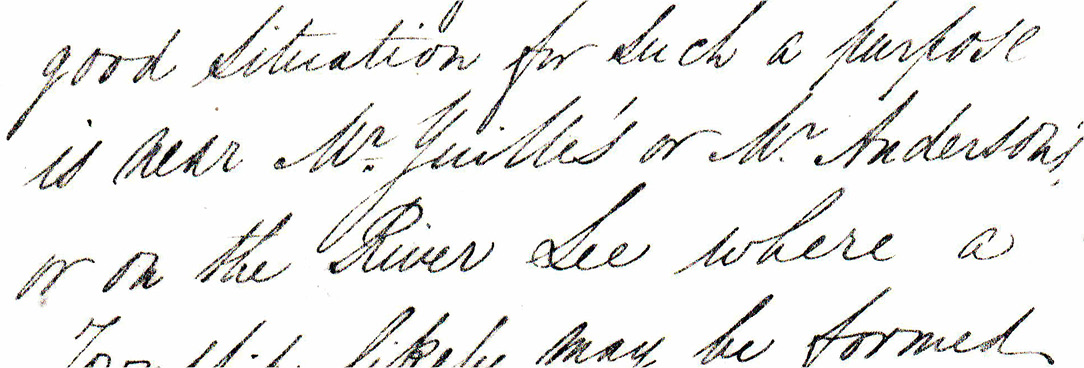Last updated:
‘Campbell and Woolley’s Store’, Provenance: The Journal of Public Record Office Victoria, issue no. 10, 2011. ISSN 1832-2522. Copyright © Joan Hunt.
Evan Jenkins in The golden chain: a history of Sebastopol claims that the first store in inland Victoria was built at the Round Water Holes near Sebastopol, now a suburb of Ballarat. This statement is a repetition of an 1870 claim by historian William Withers. However, when researching the area for my history of Ross Creek, I realised that some confusion had arisen between the 1840 business of Campbell and Woolley and the 1860s store of Isaac Pike, which was definitely at the Round Water Holes site. Correspondence in PROV series VPRS 19/P0 confirms that the historic 1840 store was not established at the Round Water Holes, but was built at a junction on the Buninyong road. The story of the store provides an interesting insight into the district near Buninyong in the pre‑gold era.
The gently curving slopes of Mt Buninyong rise up from the plains across which the Yarrowee Creek and its tributaries have meandered since time immemorial. In August 1837 the arrival of a party of British-born explorers heralded an avalanche of change to this sylvan scene.[1] The lifestyle and culture of the Wathaurong people who had dwelt within sight of the ‘big hill like a knee’ for tens of thousands of years were very suddenly disrupted by the new society that emerged with the coming of European settlers. Young, mainly Scottish land-seekers wasted no time in capitalising upon the open forests and lush pasturelands carpeting the plains in every direction.
Nineteen-year-old Henry Anderson was one of David Fisher’s party which travelled north from Corio Bay in August 1837, exploring the country around Mt Buninyong and Lake Burrumbeet.[2] Within five months Anderson had returned and settled on the Yarrowee Creek, also known as the upper Leigh River, on 13,000 acres which he called Waverly Park.[3]
William Cross Yuille, also aged nineteen, travelled with Anderson and took up his 10,000 acre Ballarat station three miles to the north, on the swamp we now call Lake Wendouree. By this time the brothers Thomas Learmonth and Somerville Learmonth, twenty and nineteen years of age respectively, had established themselves on their 12,838 acre ‘Boninyong’ run south of the mountain after which their station was named.[4]
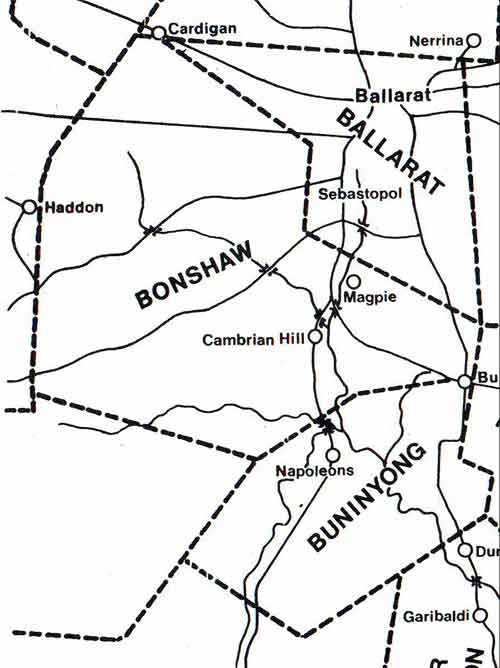
Henry’s father was Alexander Anderson senior, from Fifeshire where he had been a farmer and miller. Anderson senior had emigrated to the Swan River settlement in Western Australia in 1831 in charge of a party of soldiers on a convict vessel, accompanied by his sons Henry, William and Alexander.[5] Their mother is not mentioned, although presumably she was with them as they would have been quite young boys at the time.[6]
In 1836 the family travelled to Van Diemen’s Land and the following year Henry and William, now in their late teens, came across to the Port Phillip District. Henry held his station in partnership with George Russell, manager of the Clyde Company made up of wealthy Scots, mostly capital-rich merchants.[7]
Henry Anderson is mentioned in the diary of Katherine Kirkland, the wife of squatter Kenneth Kirkland. Mrs Kirkland tells us that she and a large number of relatives, servants and friends landed at Point Henry in January 1839.[8] These included Agnes, the infant daughter of thirty-year-old Katherine. They had five drays with bullocks, and a spring cart on which were packed the family, along with four little dogs, three cats, some cocks and hens, a pair of rabbits, three pigs, some geese and ducks. The party set off in the general direction that would eventually bring them to their new home at their chosen Trawalla squatting run, some five miles (8 km) before the location of present-day Beaufort.
One night they slept at Henry Anderson’s hut. Katherine Kirkland said he had an old woman as hut-keeper, who made them as comfortable as she could; but it was a cold night, and the wind ‘whistled very keenly through a door made of rushes’. Mrs Kirkland remarked on the unusual neatness and cleanliness of both Henry Anderson and his hut, rare among the young landholders.
Henry Anderson’s hut site overlooked the flat (now known locally as Winter’s Flat) through which the Yarrowee Creek flows south from Ballarat and Sebastopol, and across the marshy areas where his cattle would graze. Anderson married Julia Lyall on 9 January 1841 at Geelong in a Presbyterian ceremony.[9] Like many of the early European squatters (including the Kirklands, Charles Henry Ross and the Learmonths), the Andersons and their six children returned to Scotland where Henry died on 10 October 1878, aged seventy years at Chapel House, his farm in the village of Chapel near Kirkcaldy on the north side of the Firth of Forth.[10]
On 4 April 1838 a shepherd and hutkeeper named Terence McMannis, who was employed by the Learmonth brothers, was killed by ‘the blacks’.[11] The outstation where this occurred was almost certainly at the Round Water Holes, which was for many years known as Murdering Valley.
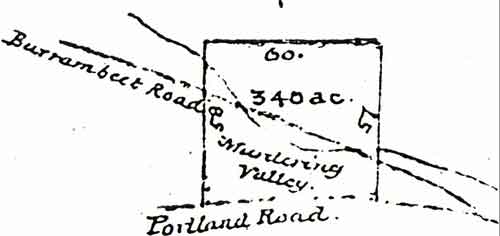
Evidence given by local shepherds in the murder case confirms that both Henry Anderson and his brother William lived in huts in the vicinity, and that the third brother Alexander Anderson was the chief overseer of Thomas Learmonth.[12]
Squatters and their families and workers were penetrating further inland from the settled districts near Melbourne and Geelong from the late 1830s, often accompanied by large flocks of sheep and herds of cattle. They were attracted to the country in the Western District that Major Mitchell had described in his overland journeys.
By the end of 1839 the rough trail that blazed through the bush, via the little settlement of Buninyong in the shadow of the mountain from which it took its name, opened the way to the west for those intrepid settlers. From Buninyong the road branched after it forded the Yarrowee Creek, and led to two major destinations. One track headed to the Pyrenees in the west of Victoria, after passing Lake Wendouree, where William Cross Yuille’s hut marked his Ballarat run. It then travelled to Burrumbeet and Maiden Hills where the Learmonth brothers later built their Ercildoune homestead. The brothers and their workers used this road almost daily as they travelled between their Boninyong and Ercildoune properties in the late 1830s and 1840s.
The other and probably more important branch led to Portland Bay via Gregory’s Inn at Carngham, Mt Emu, Fiery Creek (later known as Streatham) and The Grange (later known as Hamilton). This was the first and only road through the Western District in the 1840s, an historic route which is still clearly marked on maps, and which can be followed for most of its length to this day.[13] It was later surveyed to a width of three chains and was known as the Portland Bay Road, used for the weekly overland mail from Melbourne to Portland, by way of Buninyong, from mid 1844.
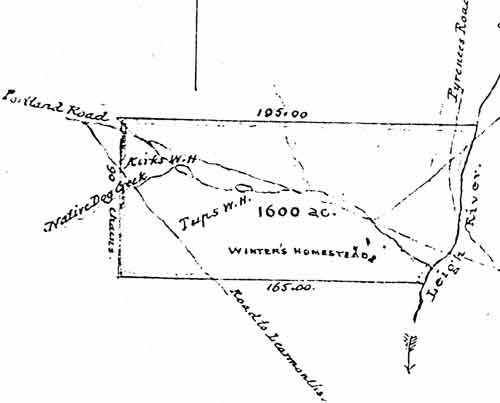
Land-seekers with their flocks and herds followed both branches of the road from Buninyong as they pushed inland looking for new grazing lands to take up in the far west and beyond the Pyrenees. They used the same route to bring their fattened stock back again to the markets in Geelong and Melbourne, making it a major route which saw increasing volumes of traffic over time.
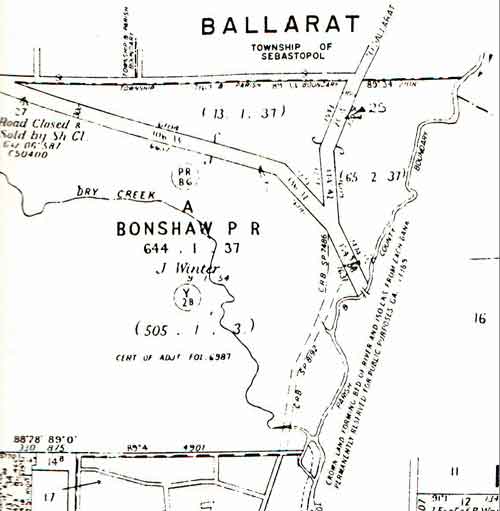
The Learmonth brothers, stationed with their workers on the Yarrowee Creek south of Mt Buninyong, commenced writing a station journal in January 1839. They recorded weather, movement of their flocks, journeys to and from Geelong and between their Boninyong run and the leased property they had called Ercildoune, the behaviour of many of their workers, and progress on various buildings being constructed at Boninyong.[15]
Ballarat historian William Bramwell Withers wrote in 1870 that ‘the first store in the neighbourhood was opened at the Round Water Holes, near Bonshaw, by Messrs D.S. Campbell and Woolley, of Melbourne, who almost immediately afterwards removed to a site next Gab’s [sic], at Buninyong, whose place they took for a kitchen’.[16] When a history of Sebastopol was published in 1980, that claim was repeated,[17] but subsequent research has shown that the site of that historic store was not where the shepherd was killed, but near Henry Anderson’s hut on Waverly Park.[18]
In October 1840, Daniel Stodhart Campbell and Alfred Woolley, merchants who had stores at both Melbourne and Geelong, sought permission to establish a store further inland, on a route where the traffic was becoming more dense by the month, a potentially lucrative site.
Daniel Stodhart Campbell married Catherine Morris Smith in 1839 at St James Church in Melbourne, as a 26-year-old wine and spirit merchant.[19] His marriage was witnessed by Alfred Woolley. The couple had no children. When Campbell died on 28 April 1875 at Vaucluse Road, Richmond he left an estate valued at £3050.[20]
Alfred Woolley, born 1818 in Peckham, London, had arrived in the colony with his brother Thomas, who apparently had no connection with Alfred’s business.[21] Alfred lived in Stephen Street (now known as Exhibition Street) with his wife Jane Christian (née Kirby) whom he married in 1840. They had nine children, some of whom died in infancy. Alfred Woolley died on 13 May 1890, leaving an estate valued in excess of £30,000.[22]
The earliest record of the store is a letter sent by the Commissioner of Crown Lands, Captain Foster Fyans,[23] to Mr Irvine at Buninyong, who was acting as agent for Campbell and Woolley. The letter is dated 22 October 1840, and in it Fyans states:
I can see no difficulty in your selecting a place for the store Mr Campbell proposes to have at Bunenyong [sic] on the ground occupied by Mr Anderson & Mr Yuille, but not within one and one half miles of their home station…[24]
The following day Fyans wrote to Superintendent Charles La Trobe in Melbourne, informing him
that I have granted permission for a General Store to be built near Buninyong, which will be of material good to the Country in that part, and on the High Road from Melbourne to Portland Bay, the applicants Messrs Wolly [sic] & Campbell, 10£ Licence…[25]
Just eight days later confirmation was again sent to Mr Irvine:
… regarding the store which Mr Campbell intends building at Buninyong… As I before mentioned a good situation for such a purpose is near Mr Yuille’s or Mr Anderson’s or on the River Lee [sic] where a Township likely may be formed I think about the junction of the Two Roads…[26]
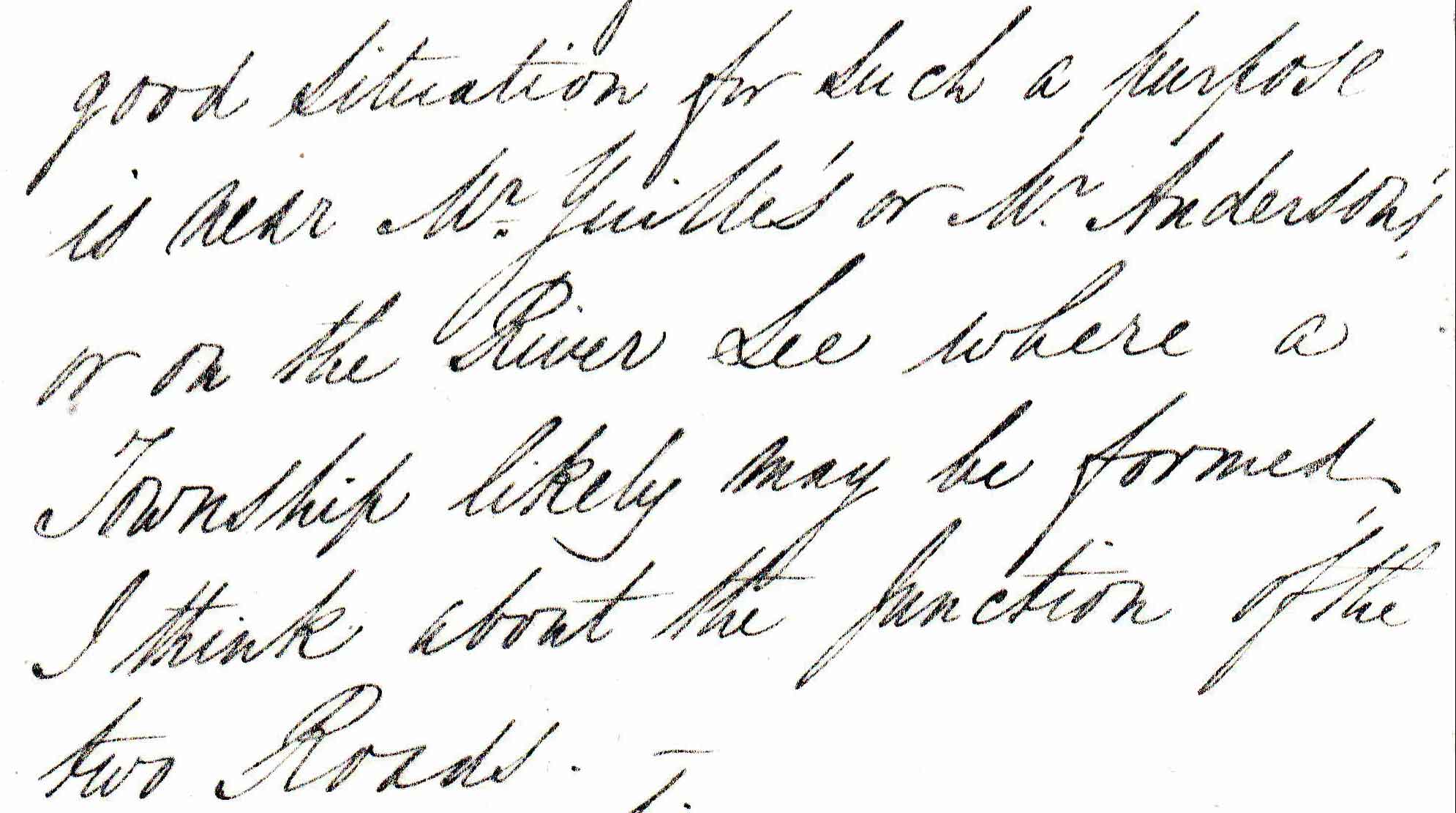
Within just a few months of the store opening for business, however, trouble had arisen. Thomas and Somerville Learmonth’s letter of complaint to Commissioner Fyans dated 2 March 1841 pointed to the drunkenness and rioting resulting from the presence of the store, which they called ‘an intolerable nuisance to the settlers in the neighbourhood’. They claimed that their men procured spirits at the store with the result that ‘sometimes they have been unfit for work for two or three days in succession’, that they had ‘attacked, beat and robbed a man who was passing’, and that ‘in one instance one of our men, while drunk, came into our dwelling house and discharged a pistol through the windows’.[27]
On 24 April 1841, Henry Anderson also complained that he had
been much annoyed even till near midnight by the noise of men fighting and swearing, etc., at the store, which (from its proximity to my dwelling house) I can hear as well as if I were on the spot.[28]
Anderson stressed how close the store was to his own residence:
… the store lately erected by Messrs Campbell & Wooley [sic] upon my run & within a few hundred yards of my dwelling house has been a great source of annoyance to me ever since its establishment…
and went on to enumerate the problems:
- his servants were able to procure spirits directly from the store, resulting in drunk and riotous behaviour and being unfit for their duty, in consequence of which his cattle and other property were being neglected;
- his dairy cows were much harassed by the bullocks belonging to Messrs Campbell and Woolley mixing with them and by their men hunting their bullocks out from amongst them with dogs;
- his cows were driven from their usual grazing places in the marsh as a result of the store being placed too close to his stock yard.
He closes with the information that ‘nearly all the settlers within thirty miles of the store have declared it to be a great annoyance and in no way of any advantage to them and are all anxious for its removal’.
Campbell and Woolley were soon notified by Fyans that their application to renew the licence for their store had been refused. They then wrote to La Trobe claiming their own serious loss and providing evidence of Fyans’s previous support for its establishment. They argued in their letter of 15 June 1841 that they had ‘expended a large sum upon the erection of a convenient store and commodious stock yard’.[29] Their request for reconsideration of the decision was, however, not upheld.
Upon a guarantee given to the local squatters – the Learmonth brothers, Archibald Buchanan Yuille, Henry Anderson (for Russell & Anderson) and Andrew Scott of Mt Buninyong – that no wines, spirits or femented liquors of any kind would be in the store,[30] permission was given by all concerned for Campbell and Woolley to remove their store from Anderson’s run and re-erect it as an eating house and store ‘on the creek about four miles on the Geelong side of the present situation’.[31] That particular site happened to be the fledgling settlement of Buninyong township. The store was established there by September 1841, and peace again descended on Anderson’s run. George Gabb, who had been in the employ of the Learmonth brothers, opened a hut near the store as an hotel.[32] His obvious purpose was to supply the liquid refreshment denied to Campbell and Woolley.
By 1842, John ‘Jock’ Winter had taken over Henry Anderson’s squatting run Waverly and renamed it Bonshaw after his wife’s home in Dumfries, Scotland. Winter achieved fame as Ballarat’s supposed first millionaire when gold leads were discovered right through the property and he sold to two gold mining companies for vast sums in the 1850s.
In the intervening years, mining has changed the appearance of Winter’s Flat considerably, but it remains open countryside with its main features of waterways, swampy ground, and rising ground above the floodplain, and the two major roads still provide evidence of the area’s early European settlement history. By establishing the approximate position of Henry Anderson’s hut from the VPRS 19 correspondence the true site of Campbell & Woolley’s store at the junction of the two roads is now known.
Endnotes
[1] PM Griffiths, Three times blest: a history of Buninyong and district 1837-1901, Buninyong & District Historical Society, 1988, p. 3.
[2] WB Withers, The history of Ballarat: from the first pastoral settlement to the present time, 2nd edition, FW Niven & Co, Ballarat, 1887, p. 2.
[3] W Kerr (comp.), Melbourne almanac and Port Phillip directory for 1841: a compendium of useful and accurate information connected with Port Phillip, Kerr & Holmes, Melbourne, 1841.
[4] RV Billis and AS Kenyon, Pastoral pioneers of Port Phillip, Stockland Press, Melbourne, 1974, p. 177.
[5] A Henderson, Early pioneer families of Victoria and Riverina, McCarron, Bird & Co., Melbourne, 1936.
[6] PM Griffiths, ‘The Anderson story’, Ballarat historian, vol. 1, no. 3, December 1981, pp. 4-7.
[7] M Kiddle, Men of yesterday: a social history of the Western District of Victoria, 1834-1890, Melbourne University Press, 1961, pp. 38-9.
[8] H Anderson, The flowers of the field: a history of Ripon Shire together with Mrs. Kirkland’s Life in the bush from Chambers’s miscellany, 1845, Hill of Content Publishing, Melbourne, 1969, p. 181.
[9] Presbyterian marriage celebrated in the District of Port Phillip, no. 83: Henry Anderson m. Julia Lyall, 9 January 1841 (reg. no. 883/535). The minister was the Rev. Andrew Love.
[10] PROV, VPRS 7591/P2, Unit 52, File 19/961, probate records of Henry Anderson.
[11] Public Record Office Victoria (compilers), Historical records of Victoria – Foundation series, gen. ed. M Cannon, vol. 2A, The Aborigines of Port Phillip 1835-1839, Victorian Government Printing Office, Melbourne, 1982, p. 288ff.
[12] Ibid., p. 308. There was no inquest, as inquests in the Port Phillip District only began in 1840.
[13] JD Lang, Phillipsland; or the country hitherto designated Port Phillip: its present condition and prospects as a highly eligible field for emigration, Longman, Brown, Green & Longmans, London, 1847, p. 205.
[14] The plan can be obtained electronically or in hard copy from the Department of Primary Industries’ Earth Resources Online Store.
[15] Thomas Learmonth’s station diary, 1839-1843, in Learmonth family papers, Australian Manuscripts Collection, State Library of Victoria, Box 102/9.
[16] Withers, The history of Ballarat, p. 7.
[17] ED Jenkins, The golden chain: a history of Sebastopol with special reference to gold and mining, Cressaid Media for the Borough of Sebastopol, Maryborough, 1980, p. 11.
[18] I made this discovery when researching the area for my history of Ross Creek (JE Hunt, Forest and field: a history of Ross Creek 1840-1990, Jim Crow Press, Daylesford, 1990).
[19] Pioneer Index, Victoria 1836-1888: index to births, deaths and marriages in Victoria, 3rd rev. edn, 1999 (CD-ROM), marriage registration no. 4194.
[20] PROV, VPRS 7591/P2, Unit 19, File 13/132, probate papers of DS Campbell.
[21] The Argus, 15 May 1890, p. 4, obituary Alfred Woolley.
[22] PROV, VPRS 7591/P2, Unit 163, File 42/539, probate papers of Alfred Woolley.
[23] Captain Foster Fyans was Police Magistrate of Geelong 1837-40.
[24] PROV, VA 473 Superintendent, Port Phillip District, VPRS 19/P0 Inward Registered Correspondence, Unit 16, File 41/977.
[25] ibid.
[26] ibid.
[27] ibid.
[28] PROV, VPRS 19/P0, Unit 15, File 41/873.
[29] PROV, VPRS 19/P0, Unit 23, File 41/870.
[30] PROV, VPRS 19/P0, Unit 15, File 41/153.
[31] PROV, VPRS 19/P0, Unit 15, File 41/873.
[32] Griffiths, Three times blest, p. 8.
Material in the Public Record Office Victoria archival collection contains words and descriptions that reflect attitudes and government policies at different times which may be insensitive and upsetting
Aboriginal and Torres Strait Islander Peoples should be aware the collection and website may contain images, voices and names of deceased persons.
PROV provides advice to researchers wishing to access, publish or re-use records about Aboriginal Peoples
